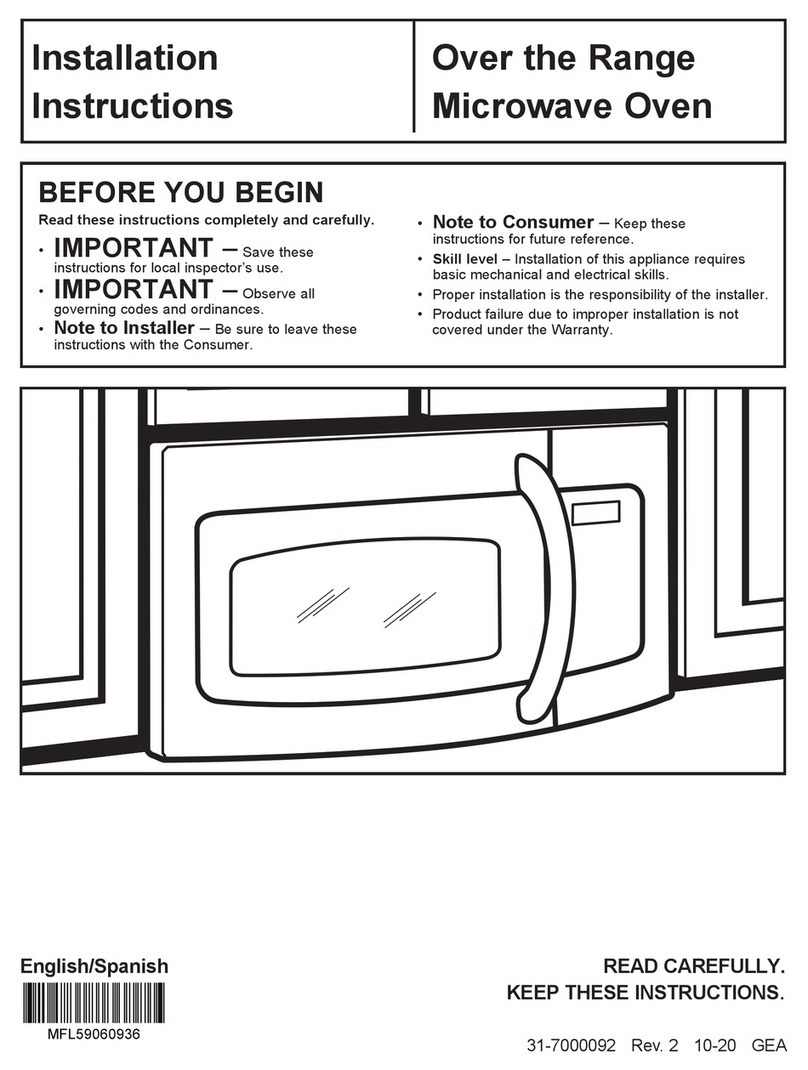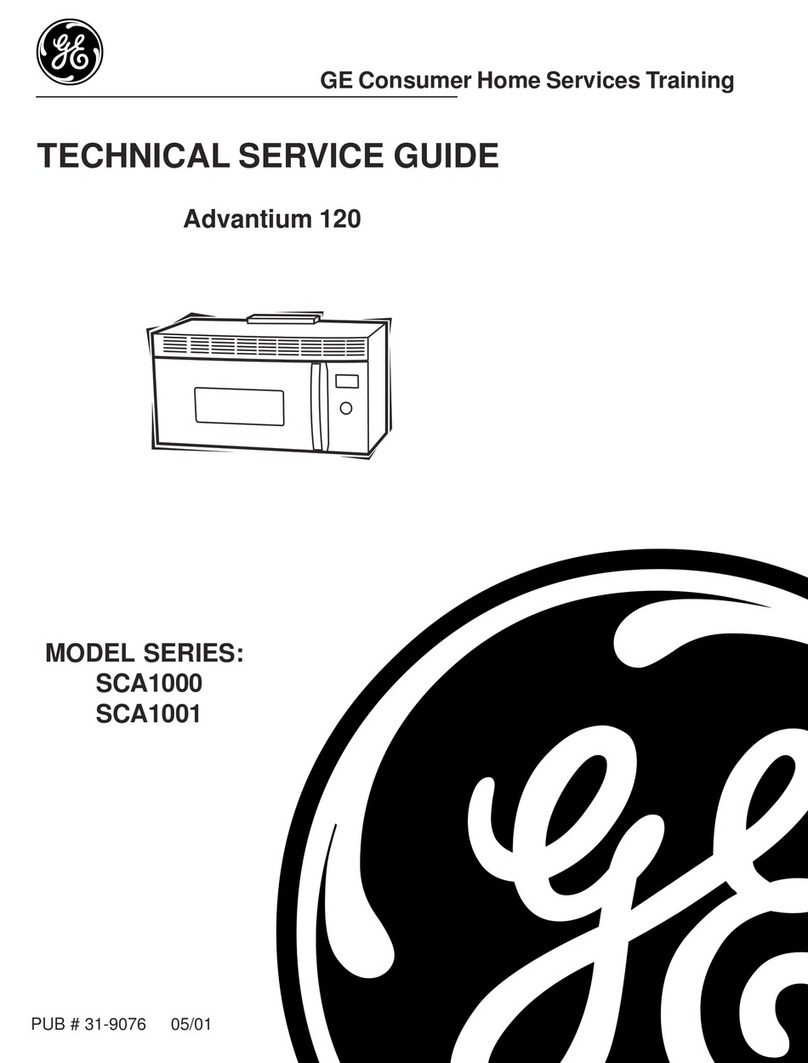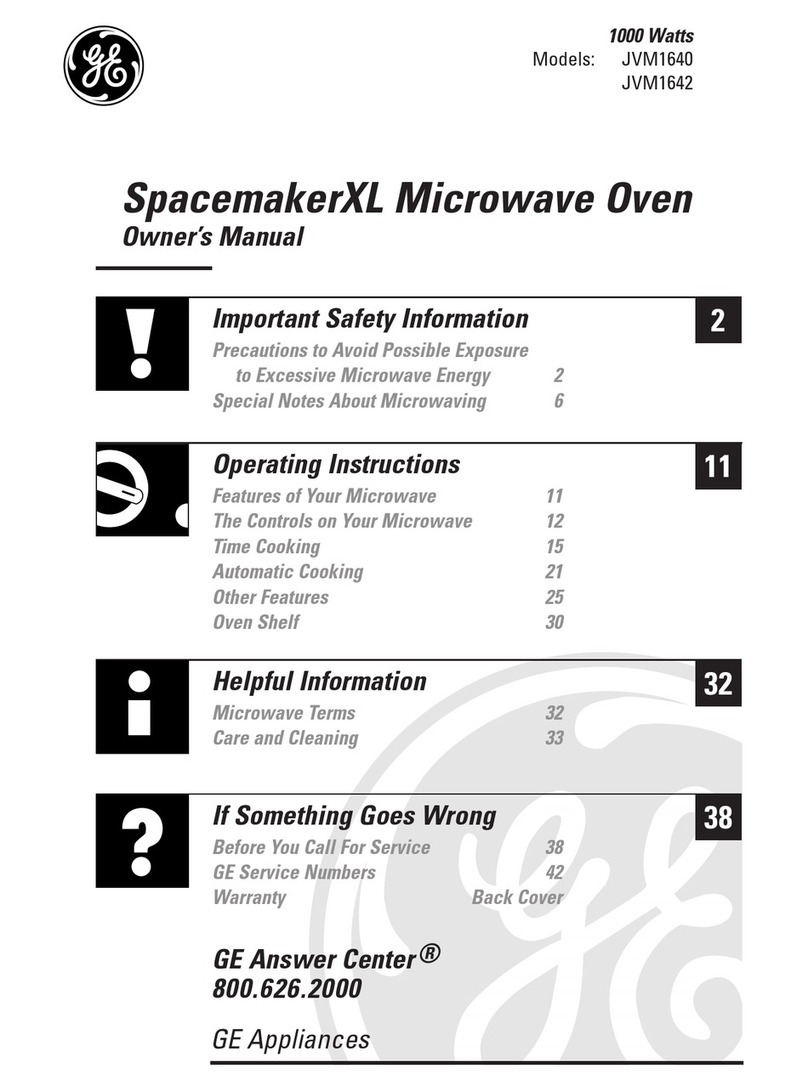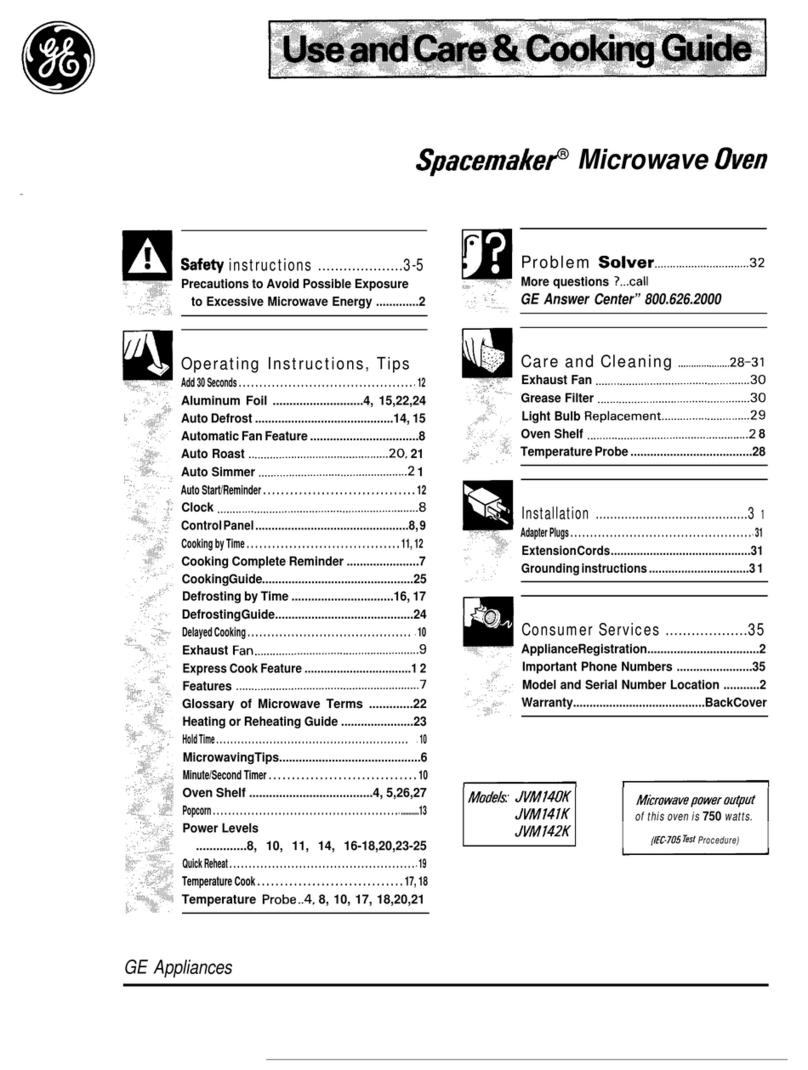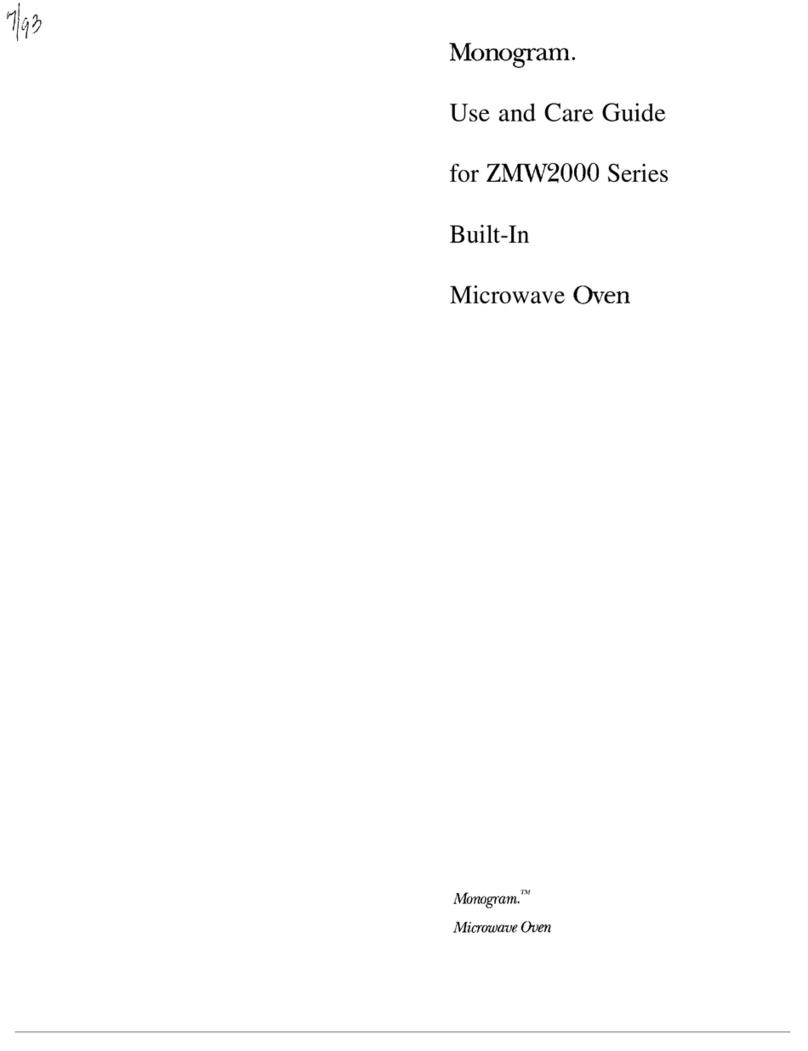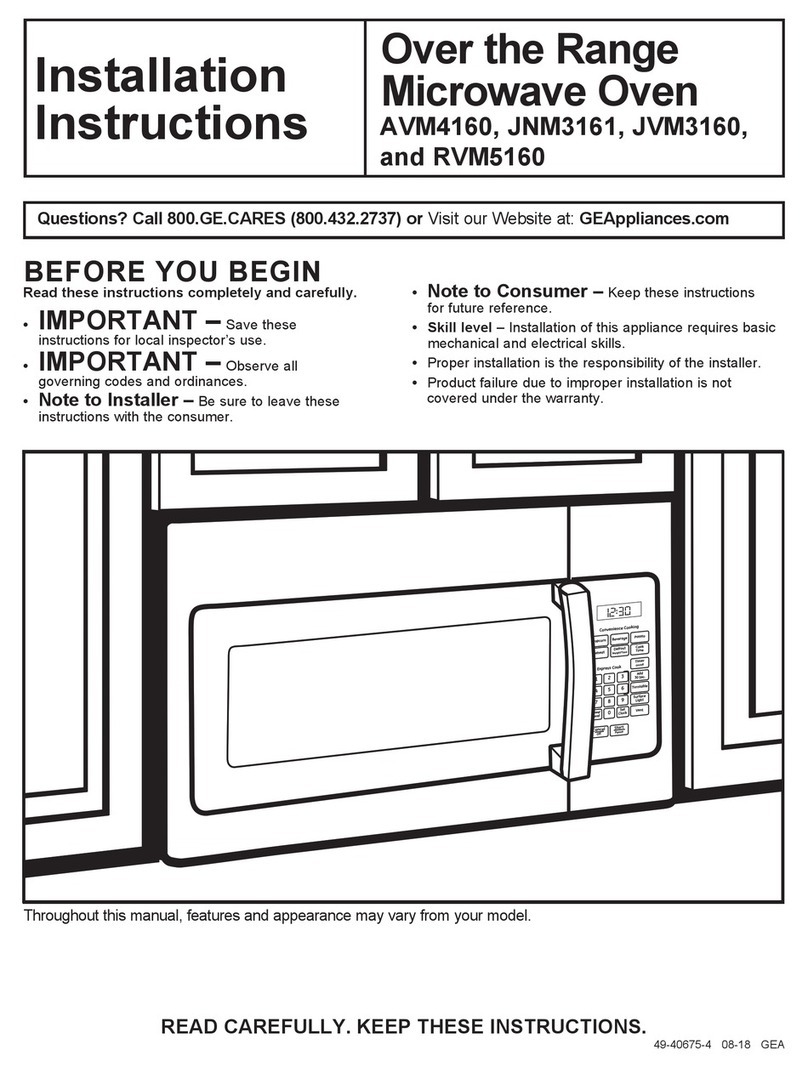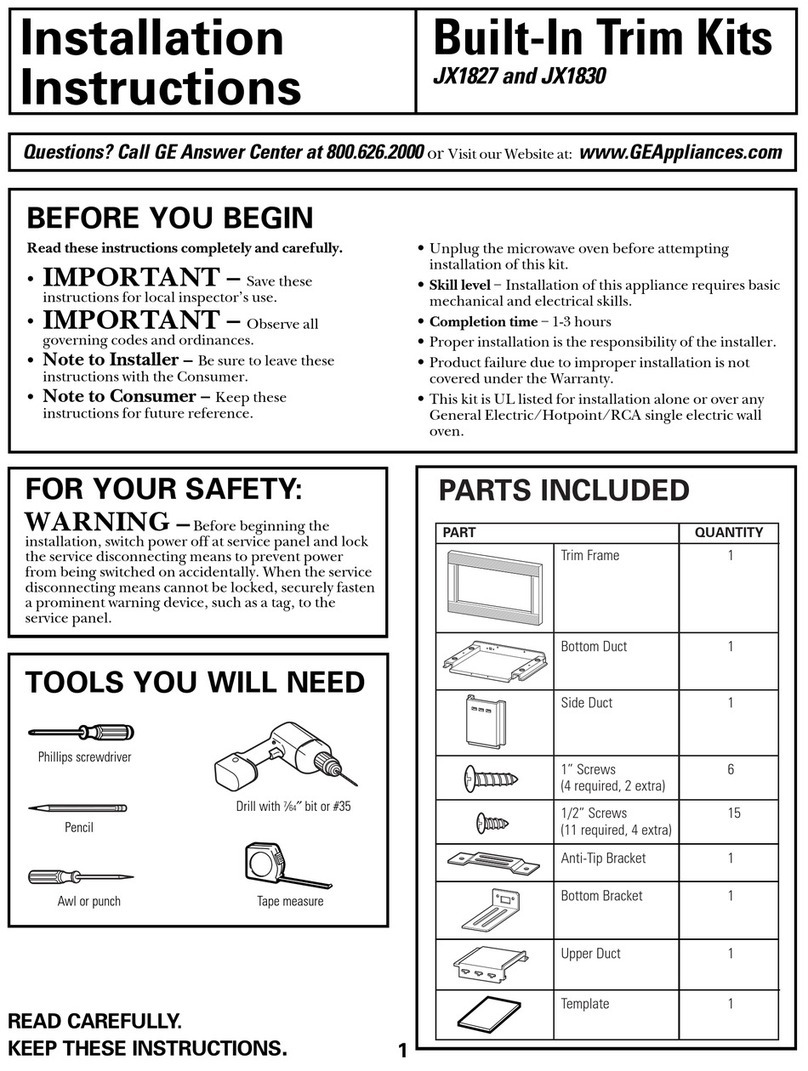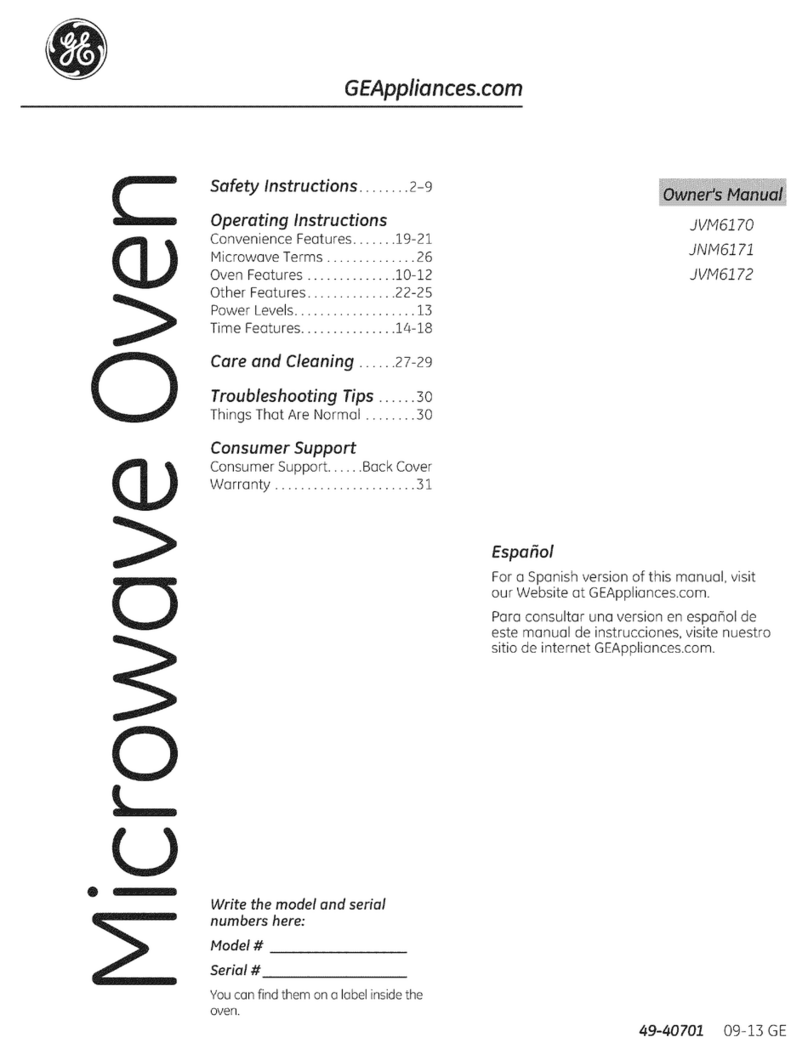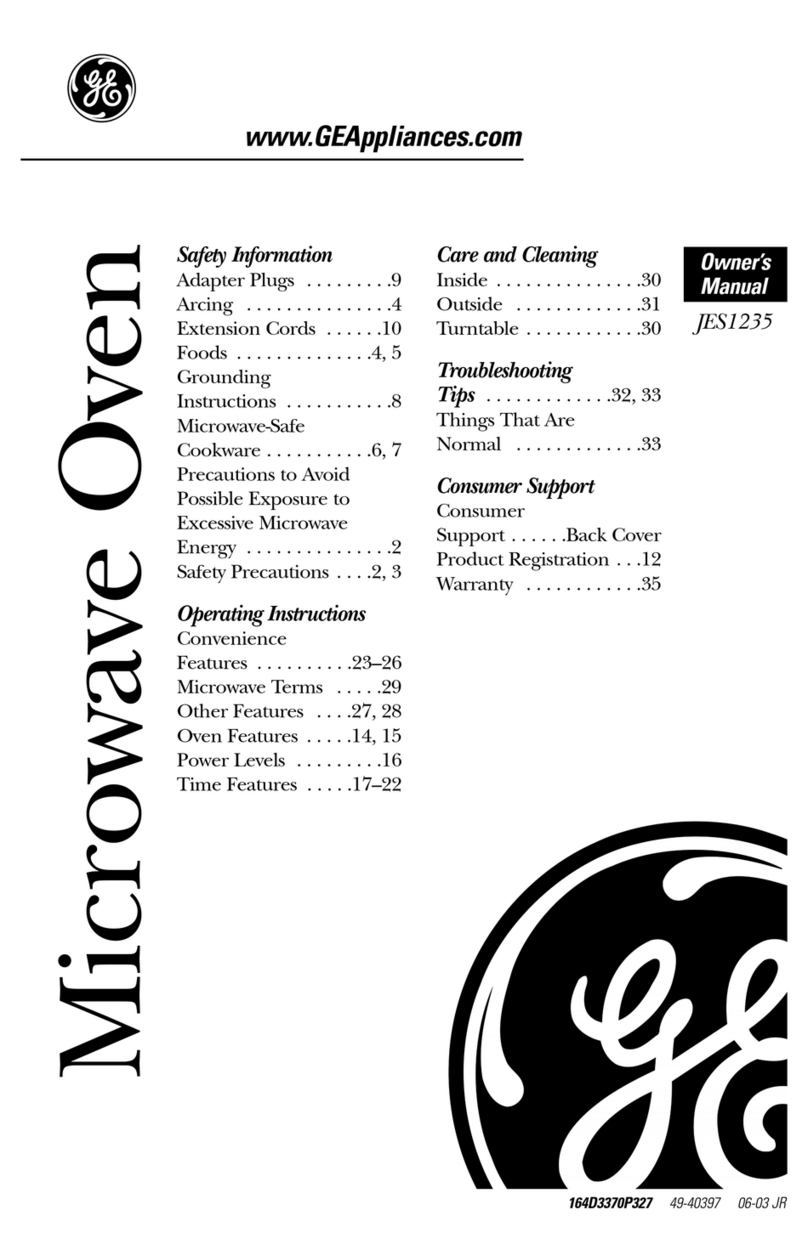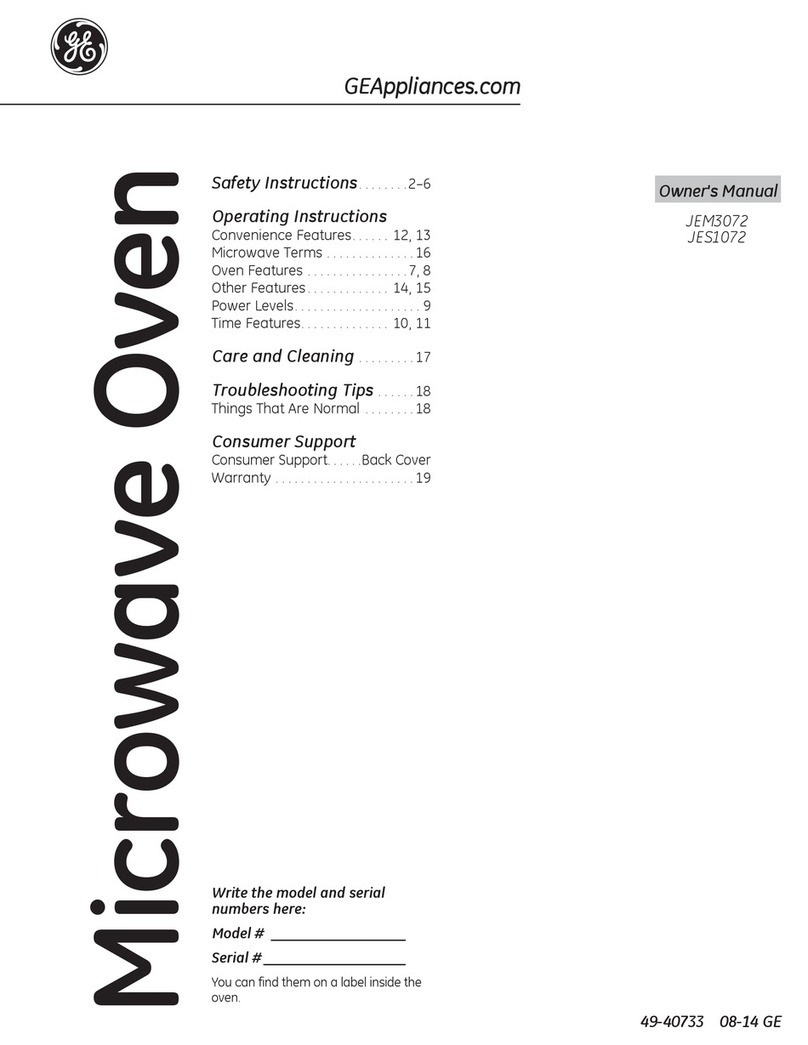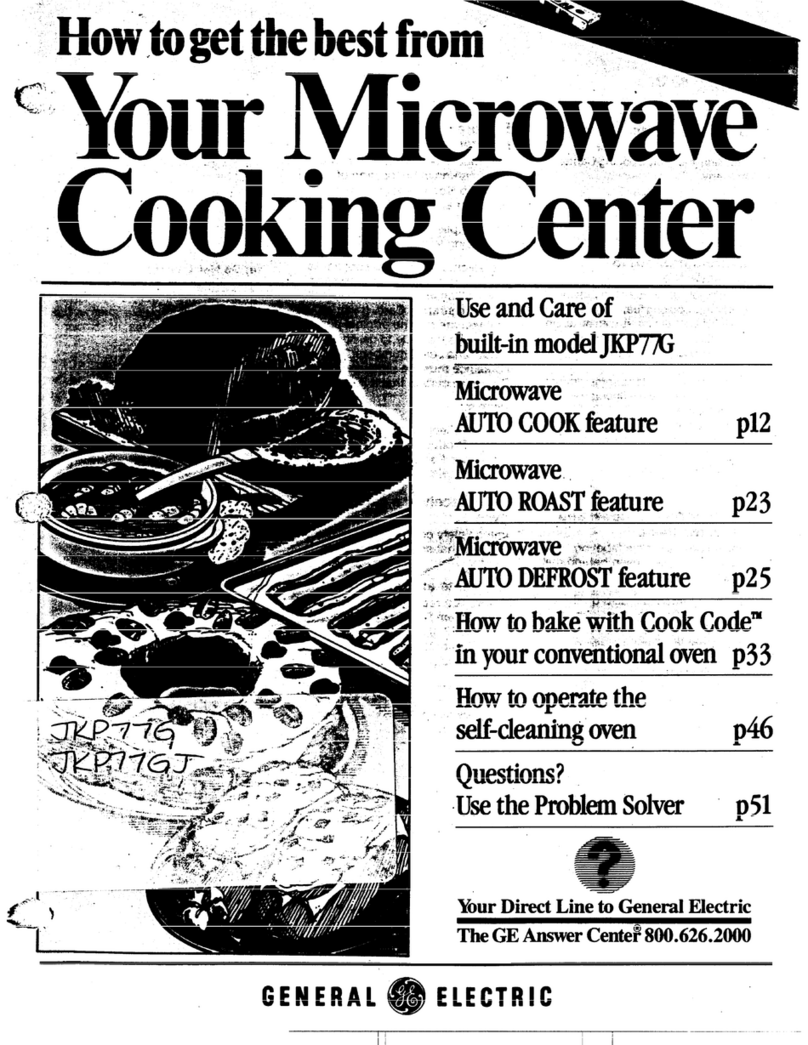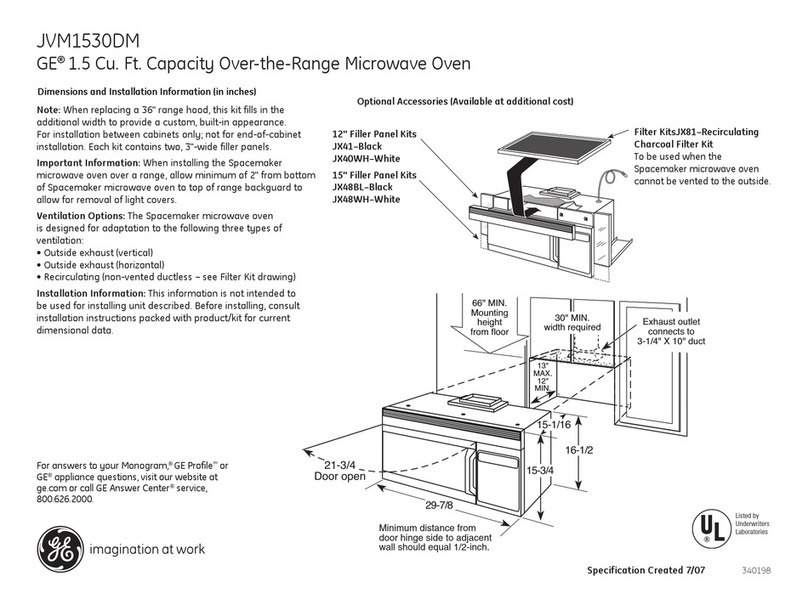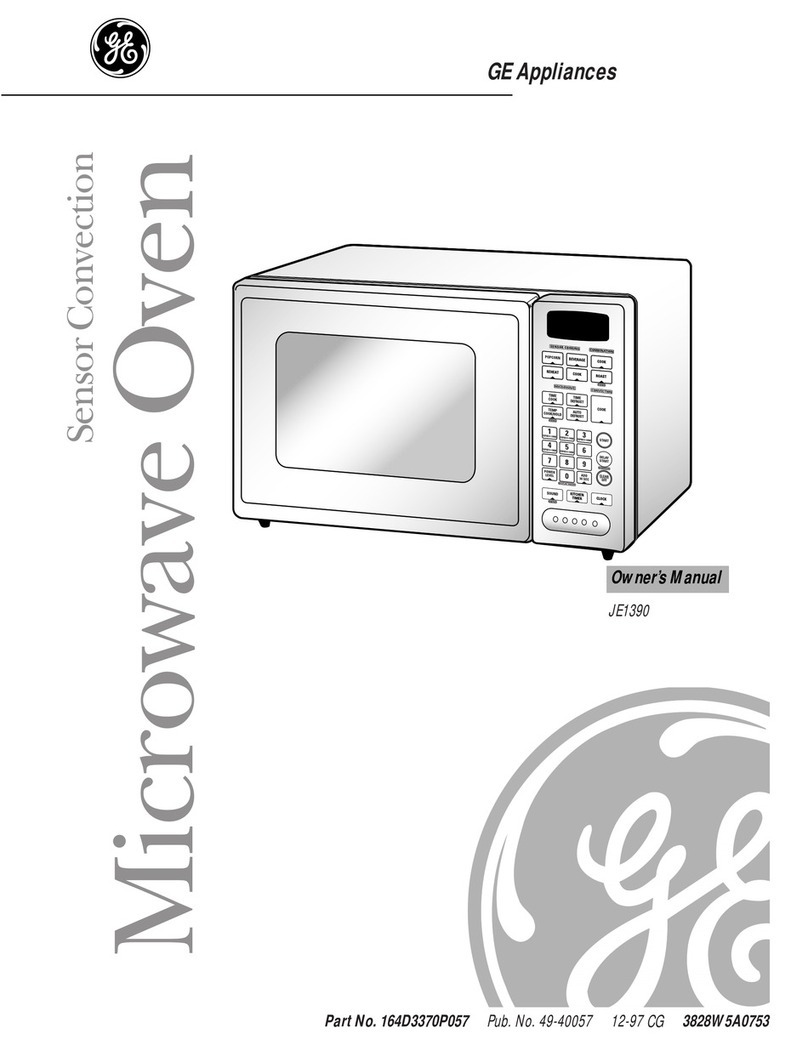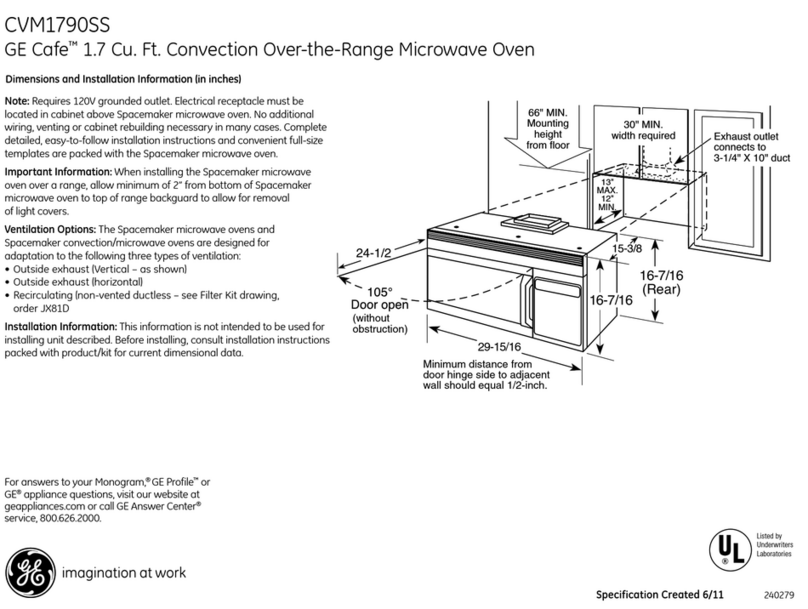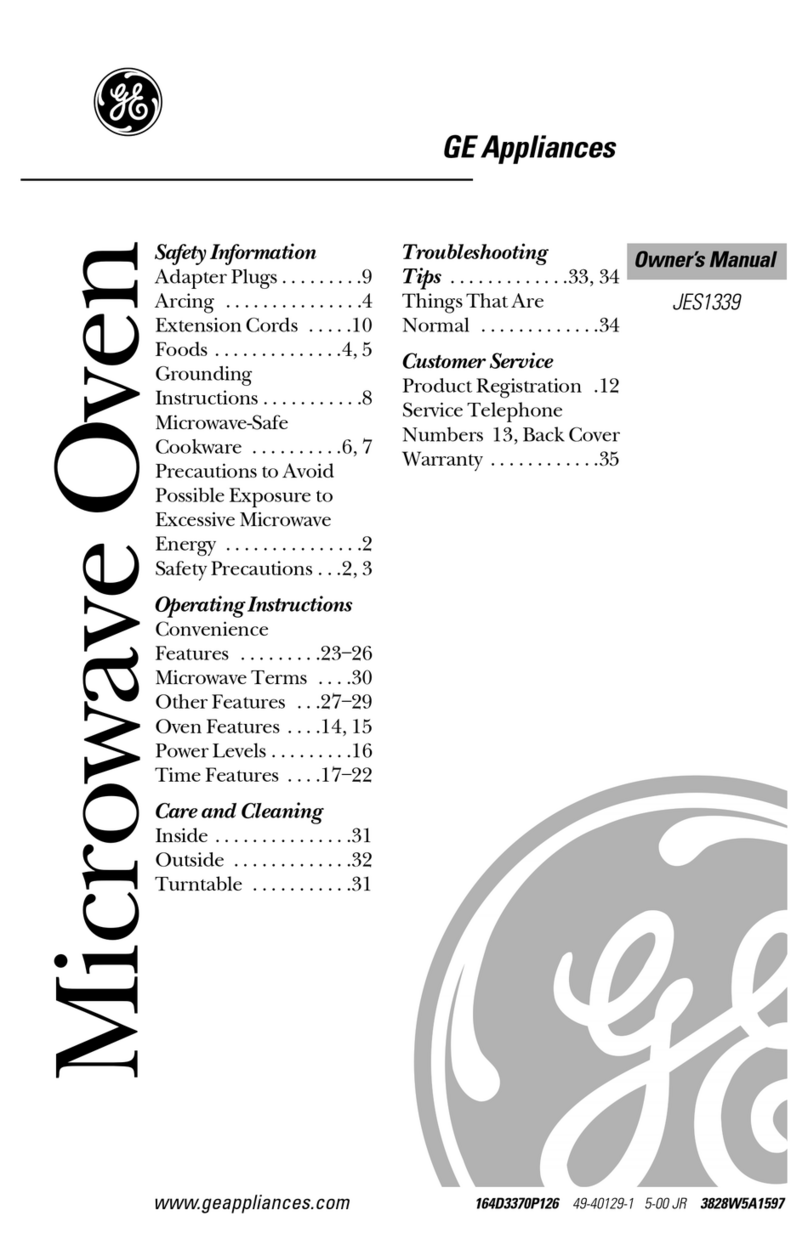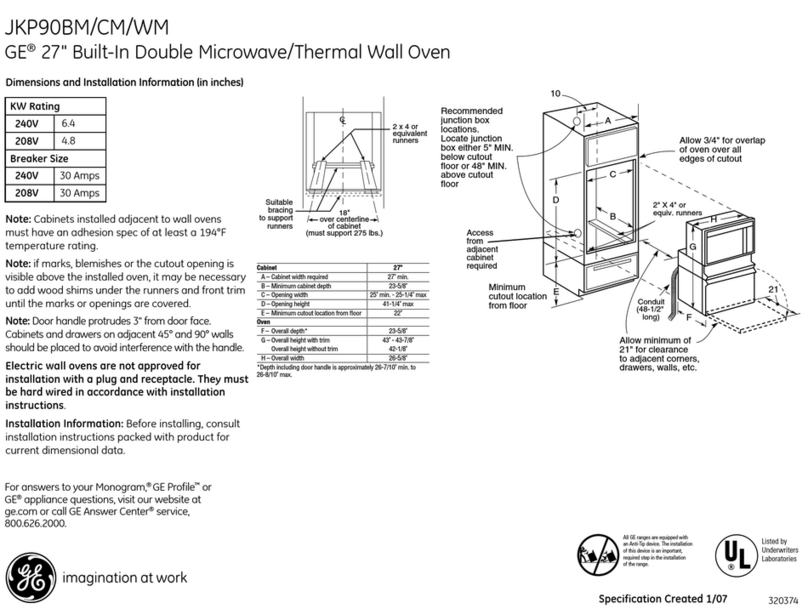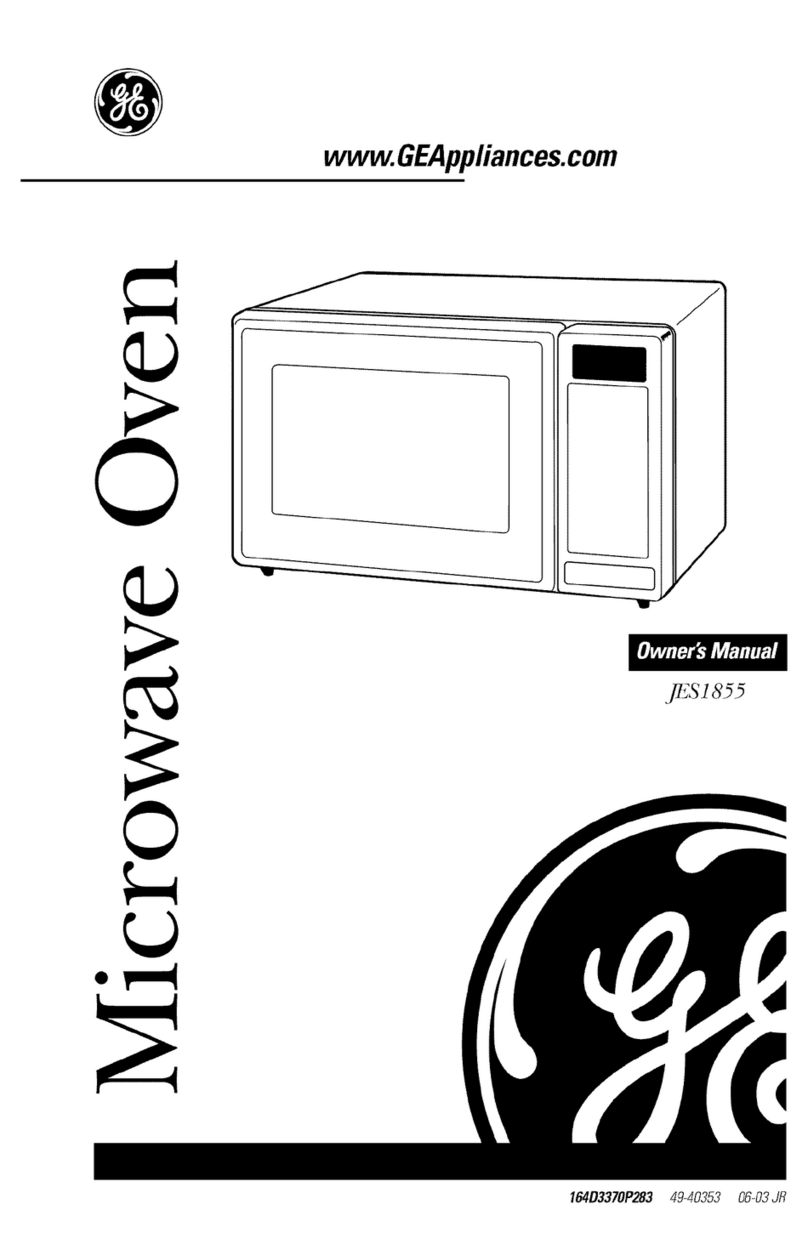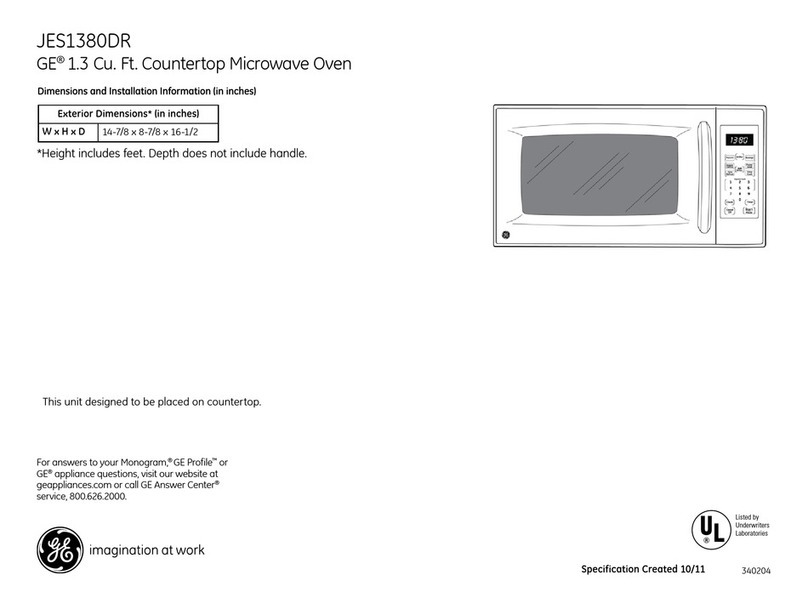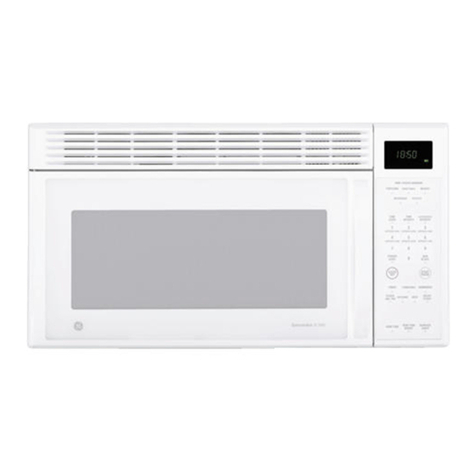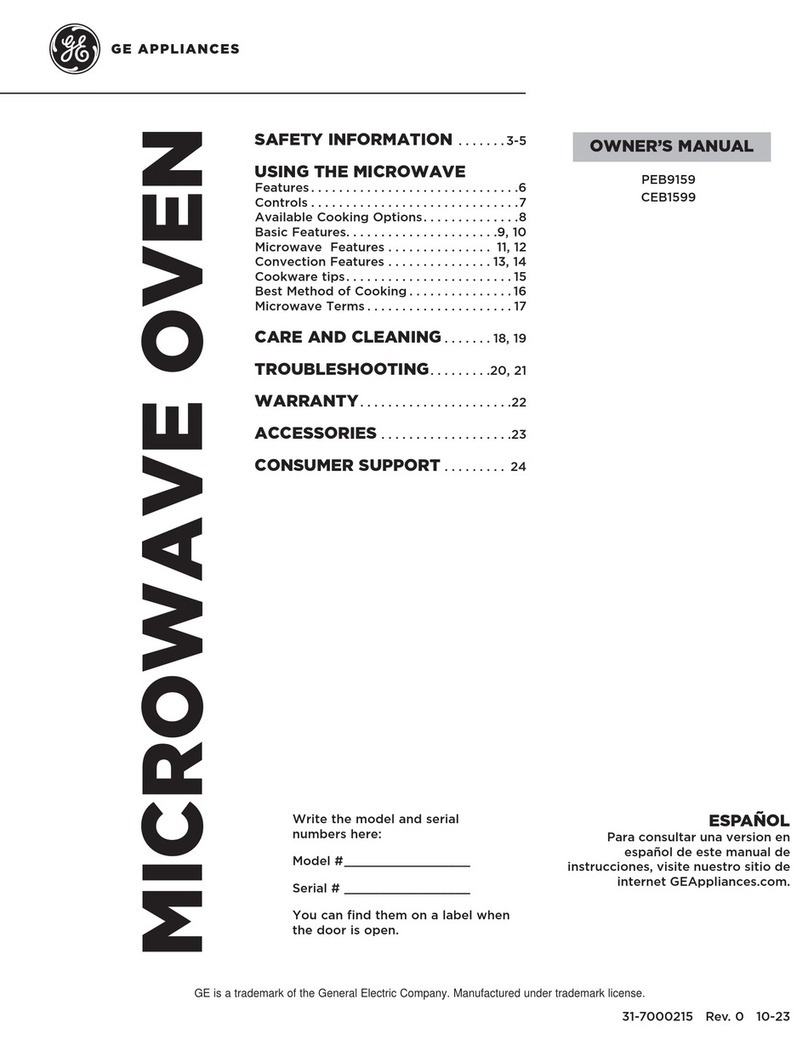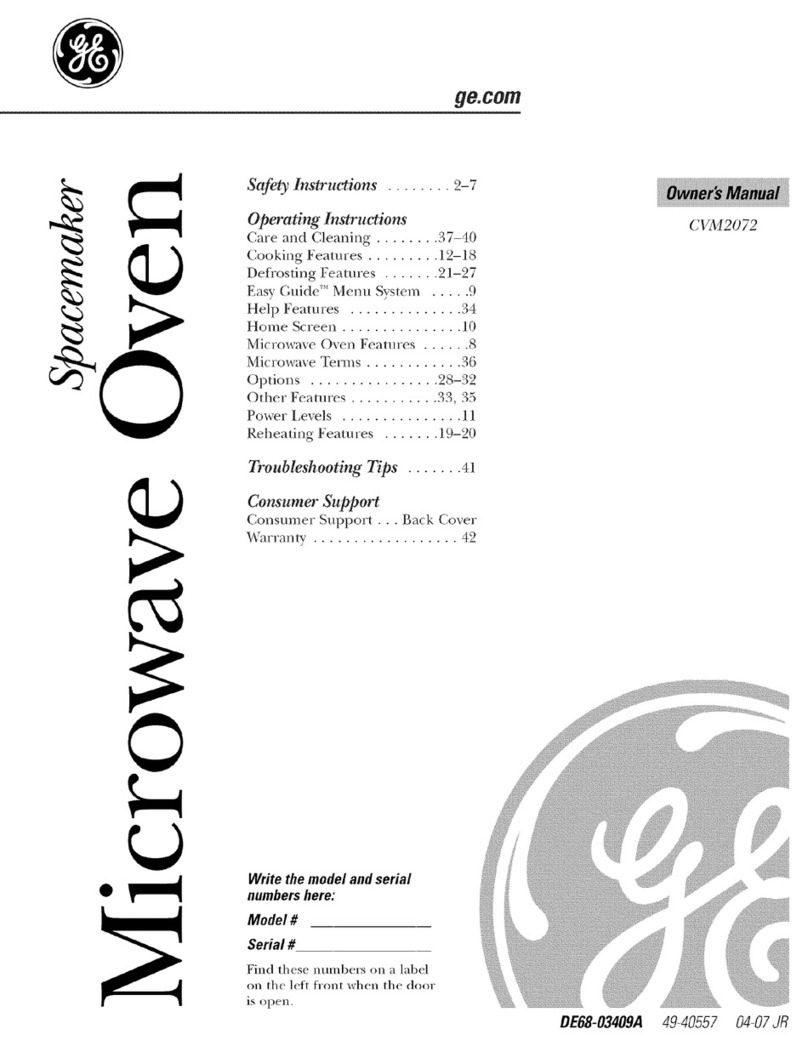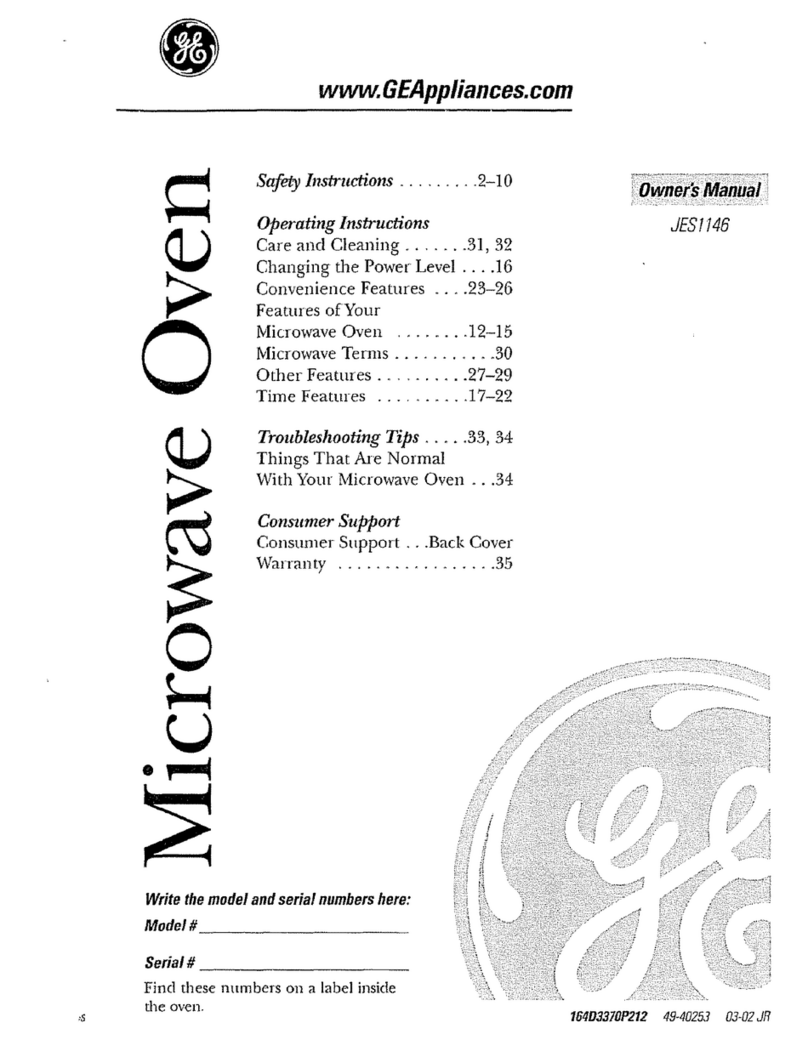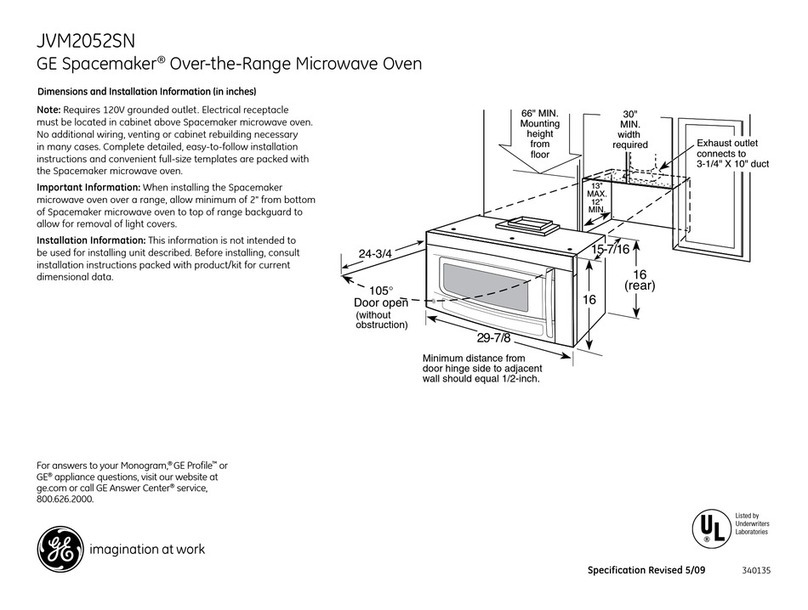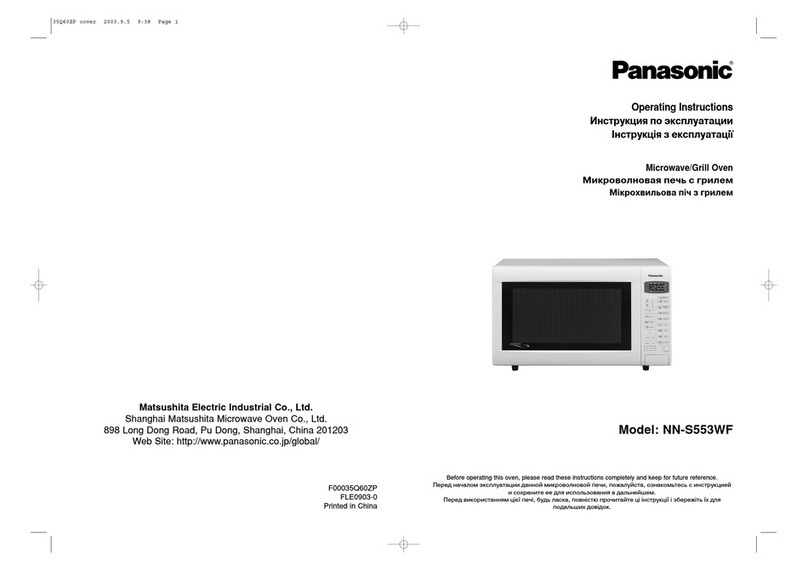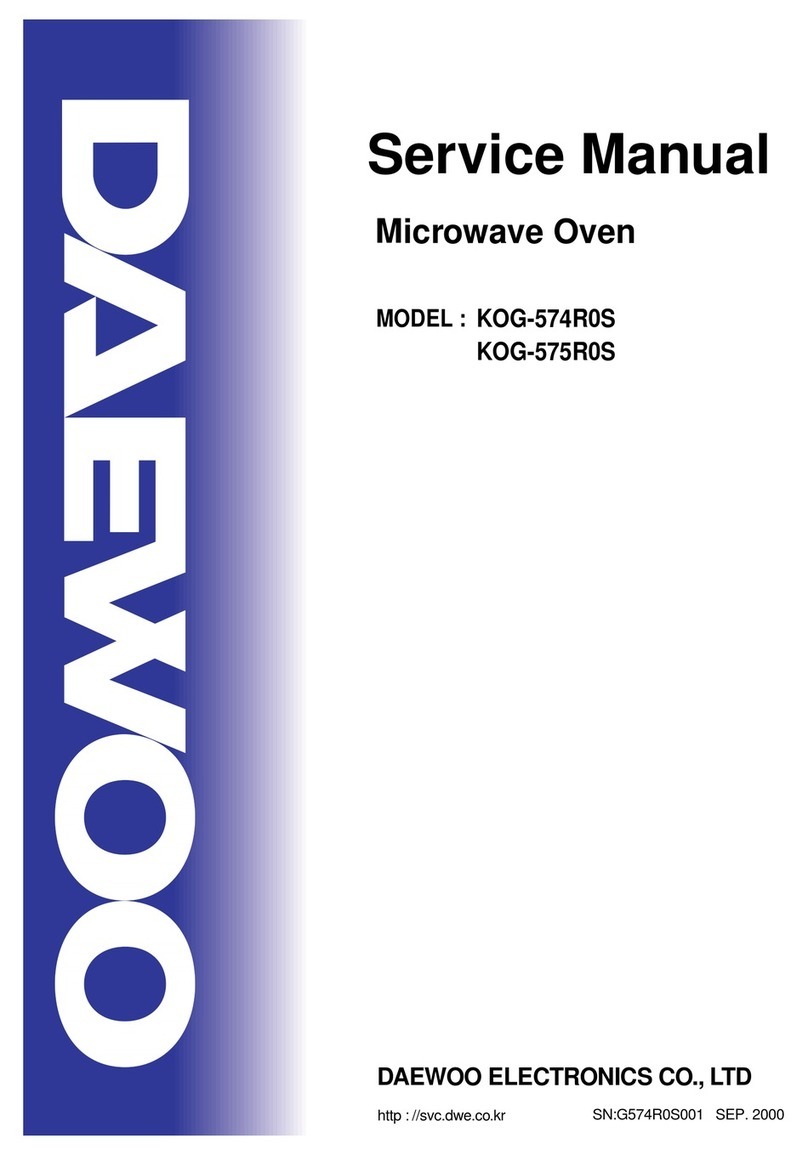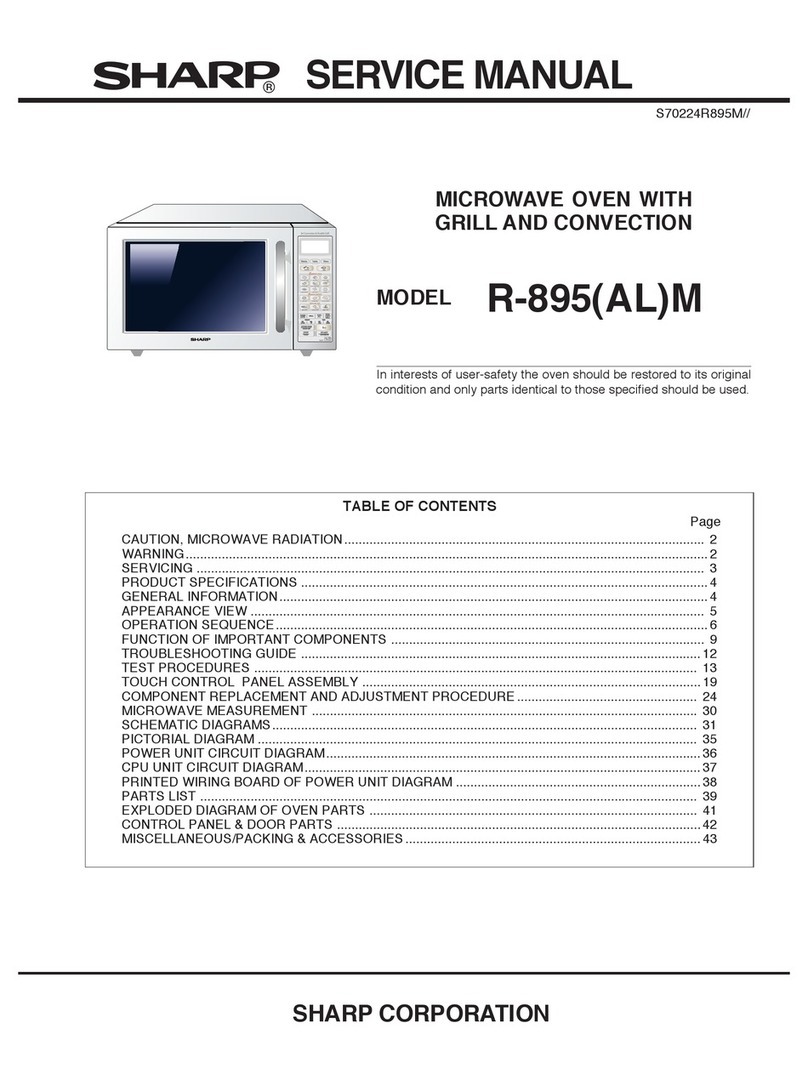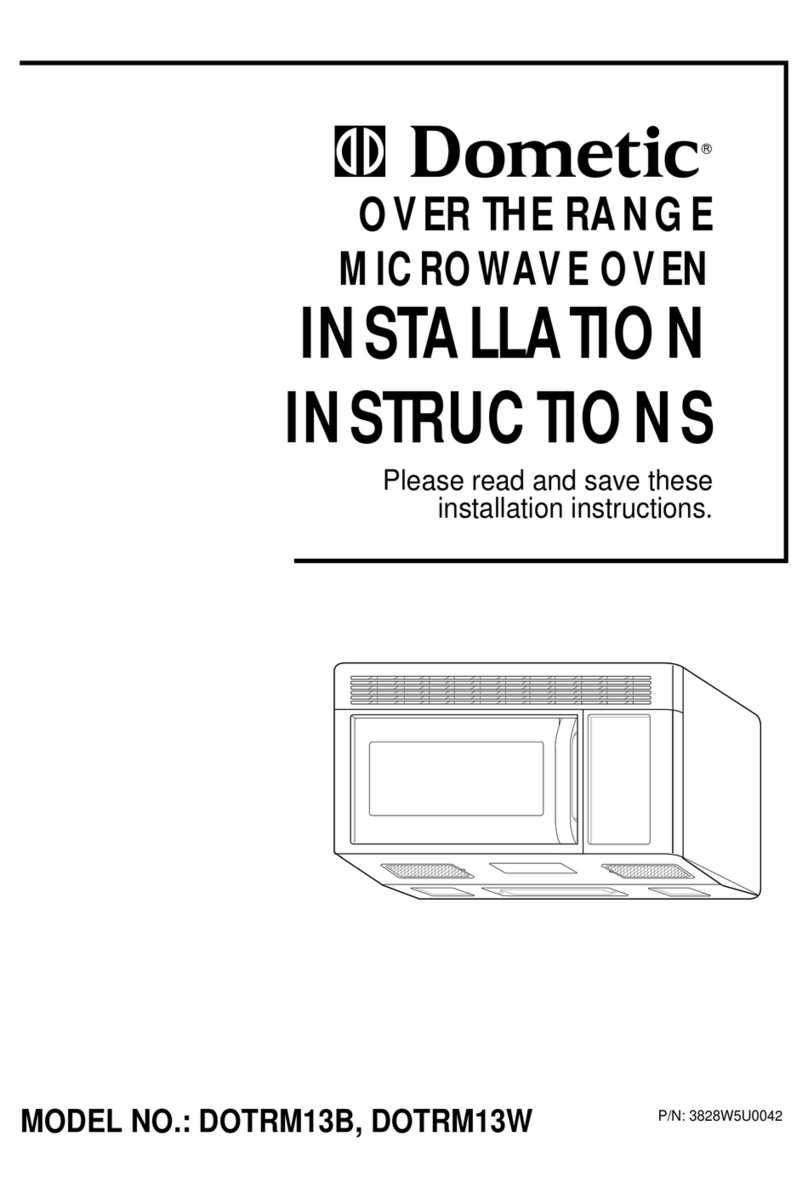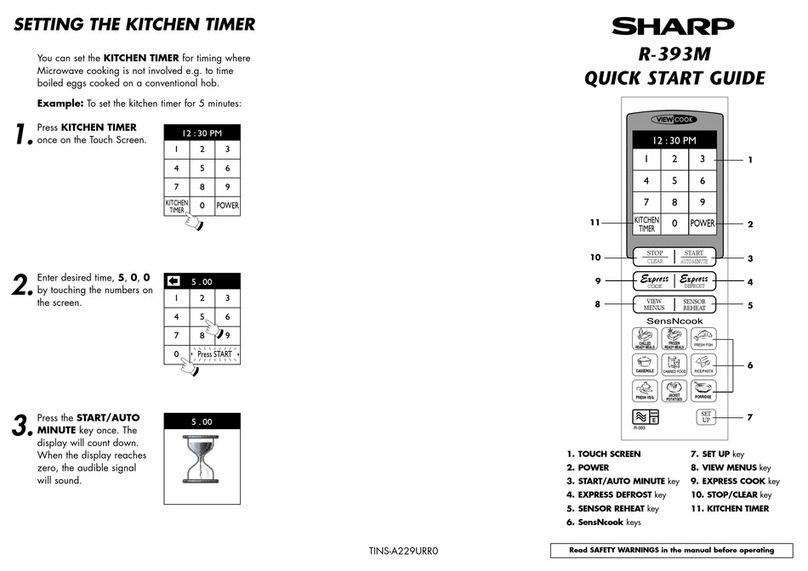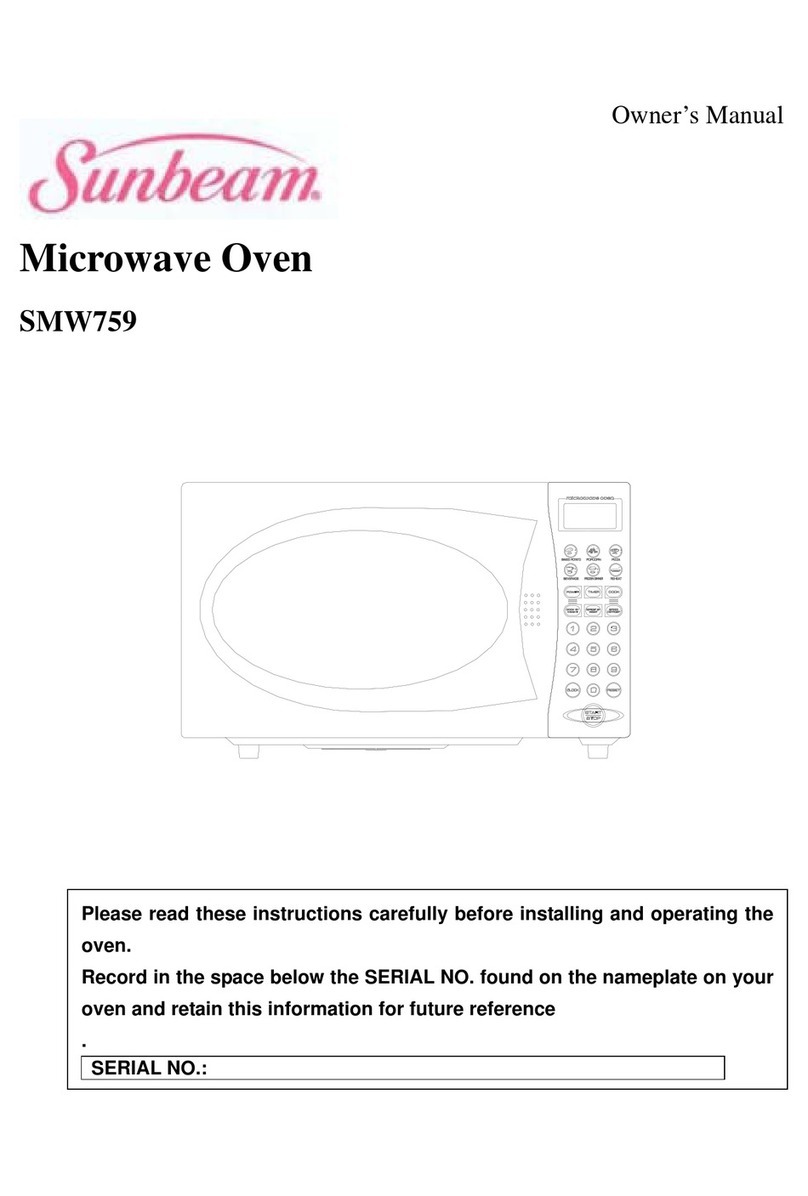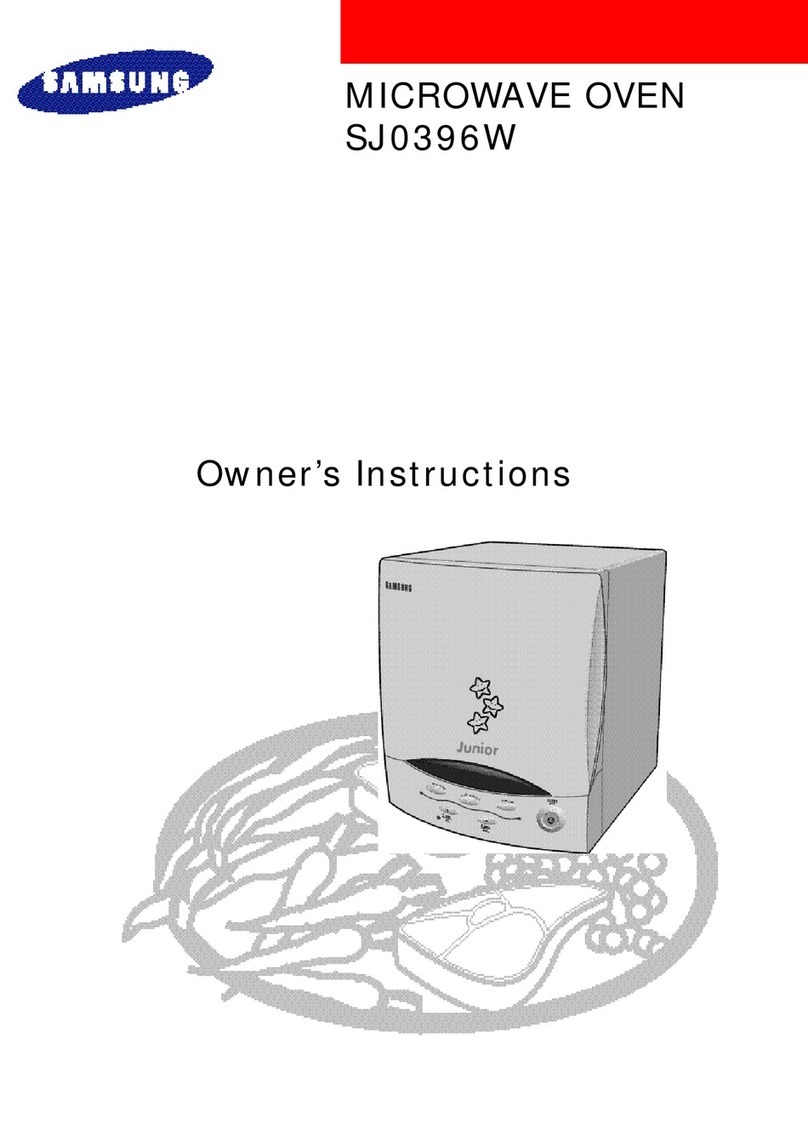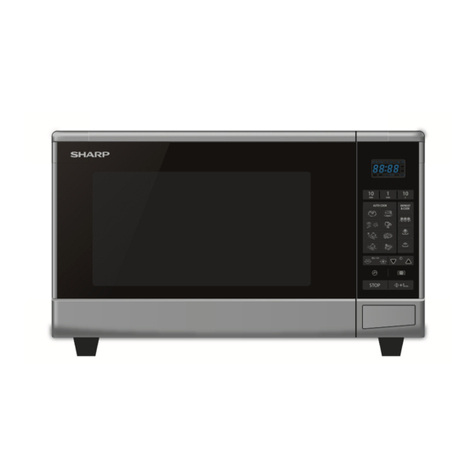
How to Use the Minute/Second
~mer
The MIN/SEC TIMER has three
timing functions:
● It operates as a minute timer.
. It can be set to delay cooking.
● It can be used as a hold setting
after defrosting.
The MIN/SEC TIMER operates
without microwave energy.
How to Time a 3-Minute
Phone Call
1. Touch MIN/SEC TIMER pad.
The display shows “: O“ and
“ENTER TIME” flashes.
2. Touch number pads 3,0 and O (for
3 minutes and no seconds). Display
shows “3:00” and “TIME” flashes.
3. Touch START. Display shows
“TIME” and time counting down.
4. When time is up, oven signals,
flashes “Endl’ and display shows
time of day.
Programming a HOLD
TIME
The Minute/Second Timer can also
be used to program “hold time”
between microwave cooking
functions. The time can range from
one second to 99 minutes and 99
seconds. A HOLD, or “standing”
time may be found in some of your
own recipes or cooking guide.
Programming Delayed
Cooking
To delay cooking up to 99 minutes
and 99 seconds, touch TIME
COOK I &11 or TEMP COOK/
HOLD and enter cooking time or
temp. Touch MIN/SEC TIMER
and enter number of minutes to
delay cooking. Touch START.
Timer will count down to zero and
cooking will begin. When delaying
temperature cooking, be sure probe
is in food before pressing START.
How to Defrost, Hold and
Time Cook
Let’s say you want to defrost a frozen
casserole for 15 minutes, hold for
10 minutes and then Time Cook for
25 minutes. Here’s how to do it:
Step 1:
Take casserole from freezer
and place in oven.
Step
2: Touch
TME
DEFROST pad.
The display shows “: O“ and
“POWER
3?’
“ENTER DEF
TIME” flashes.
Step 3:
Touch pads 1,5,0 and O for
15 minutes defrosting time.
“15:00”
appears on display. (Defrosting is
automatically set on power level 3
but can be changed by touching the
POWER LEVEL pad and the
desired power level.)
Step 4:
Set
standing or hold time
by touching MIN/SEC TIMER.
The display shows “: O“ and
“ENTER TIME” flashes.
Step 5:
Touch 1,0,0 and O to hold
for ten minutes.
“10:00”
appears
on display and “TIME” flashes.
Step 6: Touch TIME COOK I & II
pad. Display shows “COOK” and
“1
~’
“ENTER TIME” flashes.
Step 7: Touch 2,5,0 and O for
twenty-five minutes of cooking time.
“COOK TIME” flashes and
“25:00”
and “POWER 10” appear on display.
Step
8: Touch START. “DEF TIME”
and “15
:00”
counting down show
on display. As each function is
automatically performed oven
display shows instructions entered
and the function.
Step 9:
When time is up, the oven
signals and flashes
“End?’
Questions and Answers
Q. What will happen if I
accidentally reverse my defrost,
hold and cook instructions?
A. The oven will automatically
rearrange your program. Defrosting
will always come first, then hold,
and then the cooking function.
Q. Can I defrost and hold only?
A. Yes.
Sometimes you may only
want to defrost a food, hold it, and
cook it later. All you need to do is
program in Defrost and amount of
time. Then program Hold and the
amount of time. Be sure to put the
thawed dish in the refrigerator
promptly.
N~E:
Let foods remain at room
temperature only as long as safe.
Times will vary.
Q.
I programmed my oven for a
specific defrosting time but it
defrosted longer than necessary.
What happened?
A. When instructions conflict,
the oven carries out the last
instruction. You may have set the
oven to defrost for 4 minutes, hold
for 2 minutes, and then defrost for
6 minutes. In this case,
the
oven
would defrost for 6 minutes
and hold for 2 minutes.
7
